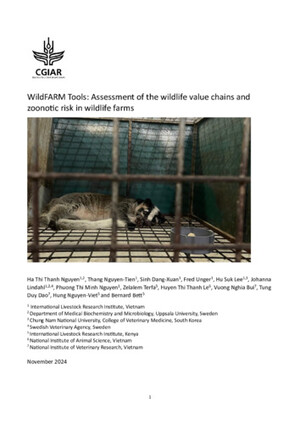
The multiple burdens of zoonoses in low- and middle-income countries (LMICs): why zoonoses are worse for the poor
Abstract
Introduction: Poor people in LMICs have greater exposure to zoonoses through livestock keeping; living in agricultural communities; interactions with peri-domestic and wild animals; less access to clean water; and, greater vulnerability to climate shocks. Although their consumption of animal source products is low, the quality of these products is poor. In addition to human health burdens, zoonoses reduce livestock productivity and are important barriers to trade in livestock products, as well as causing more difficult to quantify harms such as spillover to wildlife populations.
Methods & Results: Assessing the impacts of zoonoses helps prioritize management. I present a typology for zoonoses according to epidemiology and argue that although epidemic zoonoses are more dreaded, endemic zoonoses have more negative impact on the poor. Among the most important zoonoses in LMICs are leptospirosis, cysticercosis, brucellosis, tuberculosis, and rabies and zoonoses causing foodborne disease. The COVID-19 pandemic also showed how lack of resilience leads to greater vulnerability of poor people to emerging zoonoses of high economic impact.
Conclusion: I argue investment and innovation is urgently needed to tackle zoonoses in developing countries where they currently impose massive burdens on human, animal and ecosystem health and summarize major advances in approaches to understanding and managing the zoonoses of poverty in the last decade.
Citation
Grace, D. 2024. The multiple burdens of zoonoses in low- and middle-income countries (LMICs): why zoonoses are worse for the poor. Keynote address at the 8th European Veterinary Immunology Workshop (EVIW 2024), Dublin, Ireland, 4–6 September 2024. Nairobi, Kenya: ILRI.









